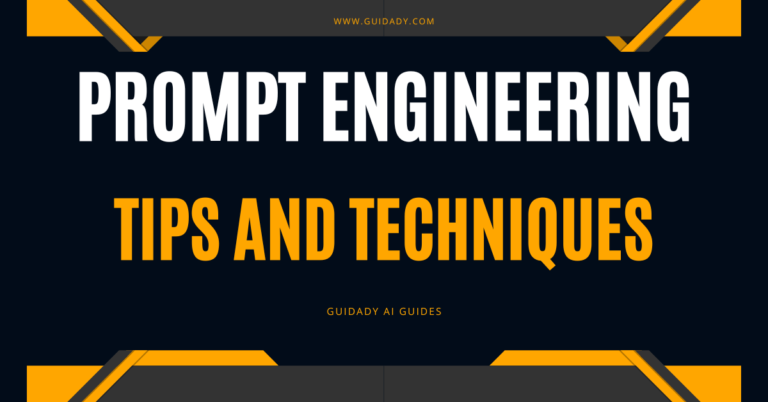Introduction
Prompt engineering is the process of carefully designing prompts and examples to help guide an AI system like a chatbot to generate appropriate and engaging responses. Prompt engineering involves analyzing how people might phrase questions or commands using specific techniques and providing the AI with examples of good responses to help it learn. As organizations deploy more AI systems like chatbots, prompt engineering has become an important skill for user experience designers, content strategists, and others to develop. and a new job title emerged lately called “AI whisperer” with a promising future and high salary.
Understand the chatbot’s capabilities and limitations
• Know the AI’s training data, algorithms, and features. Prompts that require capabilities the chatbot doesn’t have will frustrate users.
• Be aware of the chatbot’s knowledge and persona. Prompts should match the chatbot’s personality and not ask it to respond in a way that seems out of character.
• Recognize the chatbot’s weaknesses and avoid prompts that would expose them. For example, don’t ask open-ended questions if the chatbot struggles with them.
Use simple and concise language
• Avoid complex words, ambiguous pronouns, idioms, and cultural references the chatbot may not understand.
• Keep prompts short and avoid long, rambling questions. Focus on one topic or question at a time.
• Remove unnecessary words and phrases. The more concise a prompt is, the easier it will be for the chatbot to parse and respond to.
Rephrase prompts in multiple ways
• Paraphrase prompts by restating them using different words and phrases with the same meaning. This helps the chatbot learn to handle semantic variations.
• Ask the same question in both positive and negative forms. For example, ask “Do you like pizza?” and “Don’t you like pizza?”.
• Vary the tone, from formal to casual to humorous. A chatbot needs examples of how to respond appropriately in different conversational styles.
Develop a consistent style guide
• Establish guidelines for the chatbot’s voice and personality including tone, formality, word choice, and other attributes.
• Create templates for common prompt types like frequently asked questions, multiple choice questions, ratings, and more.
• Document the guidelines and share them with anyone responsible for crafting prompts to keep prompt engineering consistent.
• Review prompts regularly and provide feedback to prompt engineers to improve their skills.
Conclusion
Prompt engineering powerful techniques are the key to developing an AI system that can have rich, engaging conversations with people. By understanding a chatbot’s capabilities, using simple language, rephrasing prompts in multiple ways, and developing a consistent style guide, you can craft prompts that guide a chatbot to generate the most appropriate and helpful responses for users. With practice, prompt engineering can become second nature, resulting in an AI that speaks naturally and serves customers well.





0 Comments